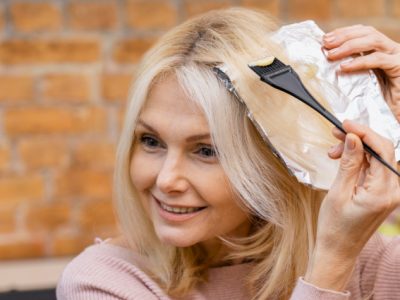It’s not easy to let go of reminders from days gone by with acne. But when those reminders take the form of acne scars on your face, it can become more than a little inconvenient. It can lead to low self-esteem and hesitation in public settings as you worry about how others perceive you.
Fortunately, help is available! With the right knowledge and treatment options, you’ll soon be able to bid farewell to embarrassing acne scars for good. In this article, we’ll walk through some of the best methods currently available at sozoclinic.sg that will help erase those unwanted blemishes so that you can reclaim confidence in your skin.
What Is Acne and How Do the Scars Appear?
Acne is an inflamed lesion caused by the plugged-up sebaceous glands. It can be blackheads and whiteheads, papules, pustules, cysts, and nodules. Acne appears on the face, neck, back, and chest.
Acne scars occur when the inflammation associated with acne causes damage to the skin’s collagen and elastin. It can lead to permanent indentations in the skin or elevated lumps called keloids. The types of acne scars vary from person to person. However, common types include rolling, boxcar, ice pick, and hypertrophic scars.
Genetics, hormones, stress, environmental factors, and poor skin care contribute to the development of acne and its scars. Acnes impact people’s appearance, making it a leading cause of social anxiety and low self-esteem. It can also lead to psychological distress and depression among those affected.
Two Basic Types of Acne Scars
Acne scars come in two basic types: atrophic and hypertrophic.
- Atrophic Scars: Atrophic scars are common acne scarring. These occur because of cystic acne or inflamed breakouts. These scars appear as depressed marks on the skin, often resembling indentations or craters.
- Hypertrophic Scars: Hypertrophied scars are much thicker than atrophic scars and tend to be raised bumps on the skin’s surface. These scars generally happen because of nodules or more severe acne cases. Hypertrophied scars can often make a person’s acne appear worse, as they can draw attention to an inflamed skin area.
Potential treatments for acne scars depend on whether it is atrophic or hypertrophic.
How Are Atrophic Scars Can Be Treated?
Atrophic scars have various treatments that range from less invasive to more aggressive.
Laser Resurfacing
Laser resurfacing uses small, focused beams of light energy to precisely remove older skin layers to promote the growth and healing of healthy skin. This procedure can treat fine lines, wrinkles, and mild acne scars.
Chemical Peels
Chemical peels apply a chemical solution to the affected area to peel off and exfoliate the skin. The new layers of skin can be smoother and help reduce the appearance of atrophic scars.
Dermabrasion
Dermabrasion is a type of treatment that uses an abrasive instrument that removes the top layer of skin, removing scarred tissue. This method works for mild to moderate atrophic scarring.
Punch Excision
Punch excision is a procedure that involves removing the atrophic scar with a small punch device and closing the wound with stitches. The resulting wound should heal to a smoother texture than the original scarring.
Dermal Fillers
Dermal fillers are injections of hyaluronic acid, collagen, or other substances into the skin to help restore volume and reduce the appearance of atrophic scars. The effect of this treatment is temporary. So, you will have to get this treatment periodically.
Subcision
Subcision is a procedure that involves inserting a needle underneath the skin to release scar tissue that causes depressions in the surface of the skin. This procedure can help smooth out shallow atrophic scars.
Microneedling
Microneedling is a treatment that involves inserting tiny needles into the skin to create small punctures and stimulate collagen production. It can help improve the texture of atrophic scars and reduce their appearance.
Fat Grafting
Fat grafting is a procedure where fat cells are taken from one area of the body, usually the thighs or stomach, and injected into the skin to help fill in atrophic scars. It can help restore volume to sunken areas of the skin.
How Are Hypertrophic Scars Can Be Treated?
There are many methods for the treatment of hypertrophic scars, including silicone gels or sheets, steroid therapy, cryotherapy Dubai, pulsed dye laser, and surgery.
Silicone Gels or Sheets
Silicone gels or sheets are applied to the skin to reduce the appearance of the scar. They help to flatten and soften the scar, as well as reduce redness and itching.
Steroid Therapy
Steroid therapy can reduce inflammation and improve the overall appearance of a hypertrophic scar. Further, it is typically injected directly into the scar tissue to reduce its size and appearance.
Cryotherapy
Cryotherapy involves freezing temperatures to reduce the size and appearance of a scar. This method works for more severe hypertrophic scars.
Pulsed Dye Laser
Pulsed dye laser treatment can reduce redness, inflammation, and skin darkening, some of the consequences of hypertrophic scars. It delivers pulses of light energy to the area, which helps break up the scar tissue and promote healing.
Surgery
Surgery is a more invasive option. However, it can effectively reduce the size and appearance of hypertrophic scars. The surgery type will depend on the severity and location of the scar.
The Bottom Line
Ultimately, it is possible to say goodbye to those acne scars for good if you take the proactive approach. Various treatments help reduce the appearance of these blemishes on your skin. Everyone deserves to have clear and healthy-looking skin that they can be proud of. So don’t hesitate to ask for an evaluation and advice.
Remember – even if there’s no hope for your acne scars, our doctors at Sozo Clinic are here to provide the best solutions so that you can turn back time!
Read Also:

















